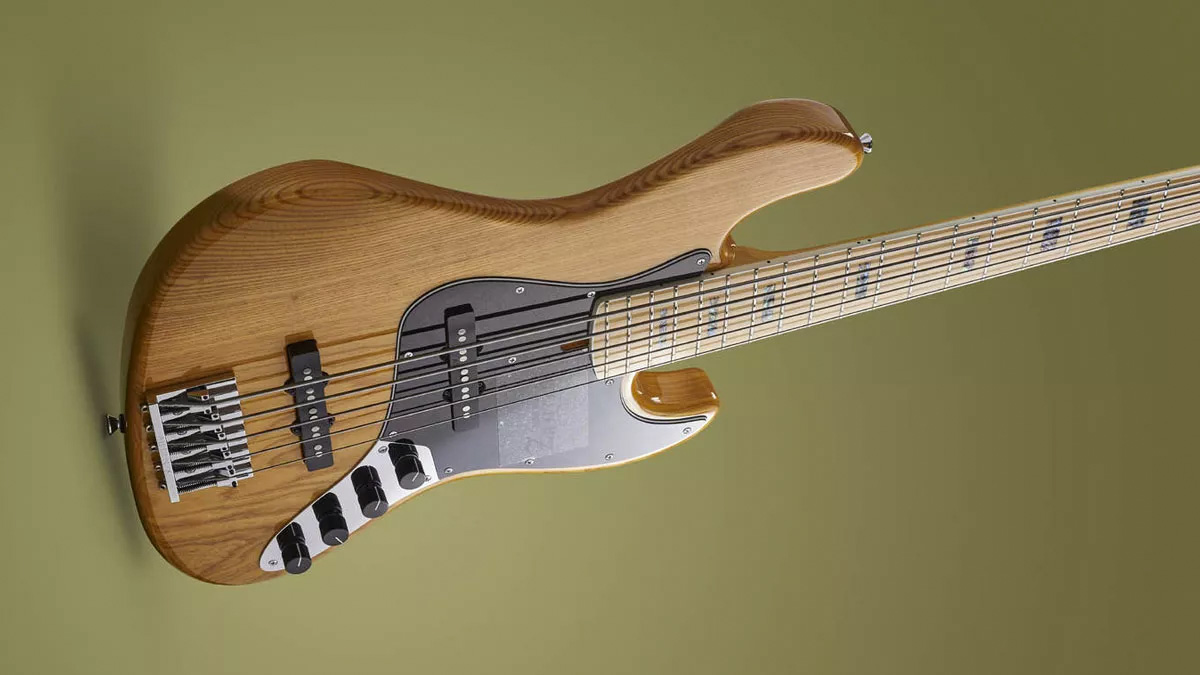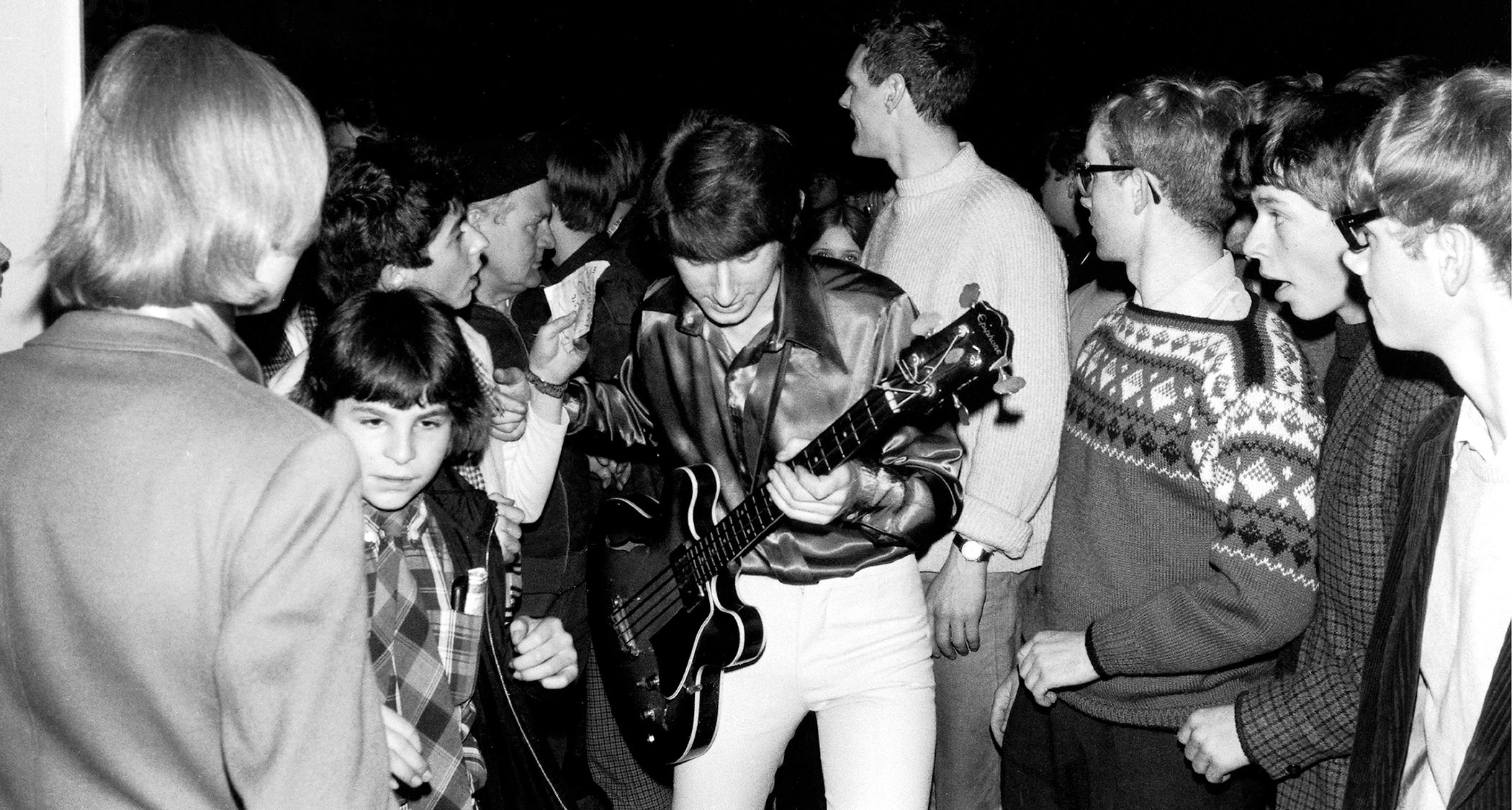Chic bassist Jerry Barnes: “I use Bernard's chucking, but not like him… I’m trying to keep from bleeding!“
Chic's low-end master of funk on gear, influences, touring with Cher and keeping Bernard Edwards' basslines alive

Tap into YouTube and a song called Sugar Free by Juicy, the duo of bassist Jerry Barnes and his late sister Katreese, an award-winning performer and composer known for her work on Saturday Night Live and elsewhere.
This song, a hit in 1985, was the first real emergence into the limelight for the siblings; Jerry went on to perform as a session and stage musician with a huge list of stars – Roberta Flack, Carly Simon, Chaka Khan, Bette Midler, and Harry Belafonte among them.
Nowadays, Barnes holds down the bass in the modern incarnation of Chic, the band most responsible in the 70s for making disco music a global phenomenon. Based on the twin talents of guitarist Nile Rodgers and bassist Bernard Edwards, Chic foundered in 1996 after the untimely death of Edwards at the age of only 43.
Any bassist coming into this band after Edwards would find it a challenge. Those world-famous bass parts, groovy and catchy beyond all reasonable explanation, manage to be both simple and fiendishly complex at the same time – as anyone who has tried to play Good Times, Everybody Dance or Le Freak will confirm.
Barnes pulls it off, though, night after night. Let’s find out how...
How did you first connect with Nile Rodgers, Jerry?
“I went to see Bernard and Nile play in New York City right before they went on the Japan tour in 1996, where Bernard passed away. I had never seen Chic live, and I was sitting there staring at Bernard while he played, although I couldn’t figure out what his hands were doing.
All the latest guitar news, interviews, lessons, reviews, deals and more, direct to your inbox!
“Towards the end of the following year, a friend of mine told me that Nile was looking for a bass player and that I’d be perfect for the job. Katreese and I auditioned for two minutes before Nile said ‘Okay, are you guys available?’
“It was really funny, because we immediately started playing like we were the band. In hindsight it was one of the more serendipitous moments of my life: I didn’t think of it as an audition, I just thought of it as ‘I know I can do this gig’.“
Did you try to emulate Bernard’s technique?
“Not at first. I played a lot of things differently than Bernard in terms of hand positioning, and right- and left-hand techniques. I had my own way of interpreting his parts, until about 12 years into playing with Nile, I went on YouTube and found American Bandstand footage of Chic.
“I was watching how Bernard played Everybody Dance, and he had his left hand in first position. I always played the C on the E string on the eighth fret, so I’d made it harder for myself! After seeing Bernard do it, I started playing it in his hand position.
I discover things that I don’t do like him – obviously, because I’m not him – all the time, and when I listen to the records, I realize that I’ve morphed my version of what he created. Last year, on the section where Bernard plays a little ghost note on ‘Freak Out’, I started doing it, and me and Nile just grinned ear to ear, like ‘Now we’re sounding just like the record’.“
If you’re playing other people’s music, particularly pop music with parts that people have been used to hearing, you’ve got to stay in the ballpark
It sounds as though there is no pressure on you to play exactly like Bernard did.
“You know, if we’re giving it 100 percent, the little nuances are not as important, I think, because the main bass-lines are obviously there. There have been times where Nile has asked me to play something a certain way, because the guitar, drums and bass on those records are married in a very specific way.
“I’ve only gotten carried away a few times, when I just went crazy, but I normally don’t do that. If your ego gets in the way of the music, you’re not doing the right thing – you’re not honoring the gig or the music or the artist. If you’re doing your own music, do what you want, but if you’re playing other people’s music, particularly pop music with parts that people have been used to hearing, you’ve got to stay in the ballpark.“
Do you use Bernard’s ‘chucking’ technique, where he used his fingernail as a pick?
“I use it all the time, but not like him, because I’m trying to keep from bleeding. It does hurt, and I’d say you have to do it all the time, to build up some callouses. You will literally break your fingernail if you do it like Bernard. I do it at one particular spot in every show, but not like him; I do it more like a mute with the right hand.
“He did the chuck very loosely, like a rhythm guitar player, which he was before he was a bass player, as you know. You have to realize, Bernard did this effortlessly, he was chucking with his finger and thumping, all in the same motion. He didn’t think about it, which is one of the genius discoveries of his natural technique.
My sister always said that it sounded like I could play bass from the beginning.
We thought the pairing of Chic with Cher on tour in 2019 was a masterstroke.
“Chic and Cher was a tour that I never could have imagined, when you think about your life and the gigs you do, and the bands you play with. Live Nation told us that after the audiences heard how great the show was, we were getting 80 percent capacity at the beginning of the show.
“It was the first time in their recorded history that they would get 80 percent of the house in their seats at the beginning of the show. We started early, around 7.30pm, played a 55 to 60-minute set, and then Cher was on by 9pm.“
All due respect to Cher, because following a band like Chic is quite a feat.
“Well, the truth was that we had to win the audience over, because she was the legend. People told each other, ‘You’ve got to go hear this, it’s really fun’. Certain artists are bigger than their catalog of work, and Cher is one of those. In our case, and Nile and I have talked about this, Chic’s songs are bigger than the band.
“Only our fans know us, but everyone knows the songs. All credit to Nile, he always features us and is proud of his band, so now I think people know Nile as the guitar player, me as the bassist, Ralph Rolle as the drummer and Russell Graham as the keyboard player.“
How did you get started as a bass player?
“I got started on bass to be able to play with my sister, Katreese. My father always managed bands and had equipment around – guitars, basses, drums. When I was 15, I got a Mel Bay beginner’s bass book from the local music store and I started practising.
“My sister always said that it sounded like I could play bass from the beginning. I think the first bass-line that I learned was Steve Martin’s King Tut. We had a little band and we played it at a school talent show. After that we started playing Top 40 gigs. We opened for Cameo, SOS, the Bar-Kays and all these other bands that were coming through the South.“
What was your first professional bass?
“I still have it under my bed. It was a very heavy Kramer with an aluminium neck. My dad took me to a music store when he realized that I was serious about playing music, and said ‘Pick whatever one you want’. I thought ‘Oh my God, there’s hundreds of basses’ and I picked the Kramer for the looks.
“I didn’t realize that it didn’t sound like any of the records that I loved, but I didn’t understand that at the time. I learned the hard way, because I struggled with that bass for a long time.
Of course, all of the funk players that I loved were influenced by James Jamerson
“One day I dropped it and the neck broke, and I’d seen Gary Grainger play a Fender and it hit me that I needed a Fender too for the right sound. In the early 80s, when we were recording our first album, we borrowed a Jazz bass, and that was when I realized that a Fender was the sound of Larry Graham and Marcus Miller.
Which bass players did you admire when you were starting out?
“My biggest influences were Nathaniel Phillips from Pleasure, Robert Wilson from the Gap Band, and Louis Johnson. Larry Graham too, of course. It was a time when you could have an identity as a musician in pop music. Of course, all of the funk players that I loved were influenced by James Jamerson.“

We loved your signature Atelier Z bass. Tell us how it came about.
“That bass was 25 years in the making. When I first started playing with Nile, I played a bass made by Mas Hino, whose father is the famous trumpet player Terumasa Hino, and when he went to work for Atelier Z in Japan around 20 years ago, we talked about doing a Jerry Barnes bass.
“It’s basically a Fender Jazz, with the specs that I like on it. The key was to try to use swamp ash and keep it light, which is very difficult to do because of the availability of the wood. Mas now has his own shop in New York, where he makes basses for La Bella called Olinto, as well as his own guitars and basses.
“He’s an incredible luthier. So we had years of talking about it, and Atelier Z are like the Sadowsky of Japan. I have the original prototype, which is really heavy, almost 12 pounds, but the one I use for Chic is eight pounds. I also have a five-string version, which sounds great.“
On stage, I sweat like I’ve come out of a sauna, and the dye used to come out of the straps onto my shirts
In-ears or monitors?
“I don’t use in-ears; I was so happy when I saw Lee Sklar with Phil Collins and he didn’t use in-ears either. I would argue that you risk ear damage with in-ears more than you do without them. I will turn down my monitor if it gets too loud, but I can get through any show as long as I can hear the drums acoustically.“
What other gear do you use?
“I use Aguilar amps; I’ve been with them for a long time. I use D’Addario strings, and straps made by Marieke Hartmann-Evers, which can handle how much I sweat. On stage, I sweat like I’ve come out of a sauna, and the dye used to come out of the straps onto my shirts. It was crazy!“
Bass Player is the world’s most comprehensive, trusted and insightful bass publication for passionate bassists and active musicians of all ages. Whatever your ability, BP has the interviews, reviews and lessons that will make you a better bass player. We go behind the scenes with bass manufacturers, ask a stellar crew of bass players for their advice, and bring you insights into pretty much every style of bass playing that exists, from reggae to jazz to metal and beyond. The gear we review ranges from the affordable to the upmarket and we maximise the opportunity to evolve our playing with the best teachers on the planet.






